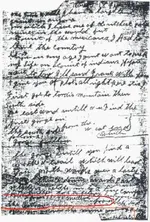Oroblanco
Gold Member
- Joined
- Jan 21, 2005
- Messages
- 7,841
- Reaction score
- 9,872
- Golden Thread
- 0
- Location
- DAKOTA TERRITORY
- Detector(s) used
- Tesoro Lobo Supertraq, (95%) Garrett Scorpion (5%)
Thanks guys for the clarifications, it does help (me anyway) and agreed to what was posted earlier about that being an interesting spot to check (IdahoDutch's ravine or canyon near the uplift) as it does look like it could be highly mineralized. Really the only way to know for sure is the old boots on the ground method and I live 2000 miles away now and can't just go take a walk up to see. But hopefully others have and can share some pics? I am pretty sure I have never been in that canyon IdahoDutch is referring to so don't have any photos I could share.
Side thing to IdahoDutch - thanks anyway and I can empathize completely. I had taken literally hundreds of photos when I first started, and lost nearly all of them in a home fire back in '89. The few photos we did manage to salvage look like they are 300 years old from the water damage and getting roasted in a fire. When I first started my father in law told me to get pictures of everything and I did, but photos are not safe from fires. Anyway the point was I understand very well, in fact the best 'strike' we ever made in Alaska many years ago I only took three photos, and have zero of them today.
Please do continue sorry for getting off the rails so far there.




Side thing to IdahoDutch - thanks anyway and I can empathize completely. I had taken literally hundreds of photos when I first started, and lost nearly all of them in a home fire back in '89. The few photos we did manage to salvage look like they are 300 years old from the water damage and getting roasted in a fire. When I first started my father in law told me to get pictures of everything and I did, but photos are not safe from fires. Anyway the point was I understand very well, in fact the best 'strike' we ever made in Alaska many years ago I only took three photos, and have zero of them today.
Please do continue sorry for getting off the rails so far there.











